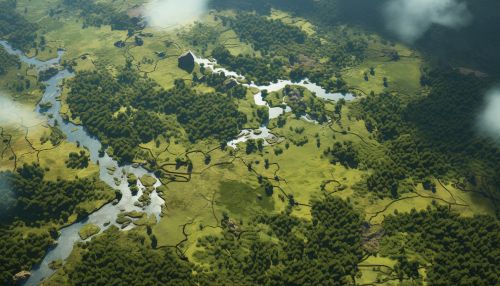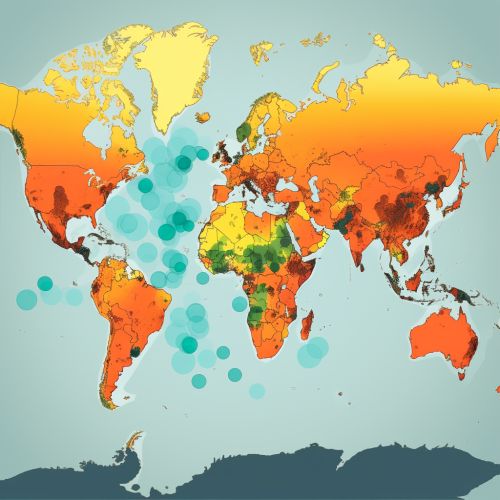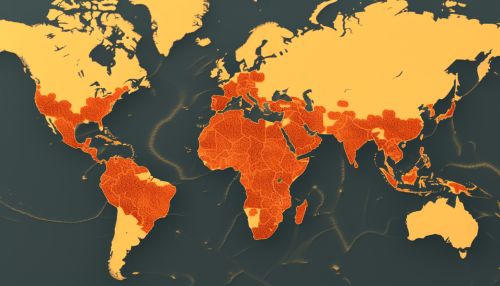The Role of Geostatistics in Environmental Management
Introduction
Geostatistics is a branch of statistics focusing on spatial or spatiotemporal datasets. Developed originally for the mining industry, it provides a range of techniques for managing spatial data and making spatial predictions. Environmental management involves the use of these statistical methods to manage and control the quality of the environment. This article discusses the role of geostatistics in environmental management, highlighting its applications, benefits, and challenges.


Geostatistics: An Overview
Geostatistics is a discipline that deals with the analysis, interpretation, and prediction of natural phenomena that vary in space and time. It uses statistical methods to interpret these phenomena and make predictions about unobserved locations. Geostatistics is particularly useful in environmental management as it allows for the effective analysis of spatially distributed data, such as the distribution of pollutants in a water body or the spread of a disease in a population.
Applications of Geostatistics in Environmental Management
Geostatistics plays a crucial role in various aspects of environmental management. It is used in the analysis of spatial data, modeling of spatial patterns, and prediction of spatial trends. Some of the key applications of geostatistics in environmental management include:
Environmental Monitoring
Geostatistics is widely used in environmental monitoring, which involves the systematic collection of environmental data over time. This data is then analyzed to identify trends, assess the effectiveness of environmental policies, and make predictions about future environmental conditions.


Pollution Control
In pollution control, geostatistics is used to analyze the spatial distribution of pollutants, identify pollution hotspots, and predict the spread of pollutants. This information is crucial for the development of effective pollution control strategies.
Resource Management
Geostatistics is also used in resource management, where it helps in the assessment of the quantity and quality of natural resources, such as water, soil, and minerals. It also aids in the prediction of future resource availability, which is essential for sustainable resource management.
Risk Assessment
In environmental risk assessment, geostatistics is used to identify areas of high environmental risk, such as areas prone to natural disasters or pollution. This information is used to develop risk mitigation strategies and inform decision-making processes.


Benefits of Using Geostatistics in Environmental Management
The use of geostatistics in environmental management offers several benefits. These include:
Improved Data Analysis
Geostatistics provides robust methods for analyzing spatial data, allowing for a more accurate interpretation of environmental data.
Enhanced Decision-Making
By providing accurate predictions about future environmental conditions, geostatistics supports informed decision-making in environmental management.
Effective Resource Management
Geostatistics aids in the assessment and prediction of resource availability, contributing to more sustainable resource management.
Reduced Environmental Risk
Through its use in environmental risk assessment, geostatistics helps in the identification and mitigation of environmental risks.
Challenges in the Use of Geostatistics in Environmental Management
Despite its benefits, the use of geostatistics in environmental management also presents some challenges. These include:
Data Quality
The accuracy of geostatistical analysis depends on the quality of the underlying data. Poor quality data can lead to inaccurate predictions and misinformed decision-making.
Complexity of Environmental Systems
Environmental systems are complex and often exhibit non-linear and non-stationary behavior. This can make the application of geostatistical methods challenging.
Need for Expertise
The application of geostatistical methods requires a high level of expertise in statistics and spatial analysis. This can be a barrier to the use of geostatistics in environmental management.


Conclusion
Geostatistics plays a crucial role in environmental management, providing valuable tools for the analysis of spatial data, prediction of spatial trends, and decision-making. Despite the challenges associated with its use, geostatistics offers significant benefits and is an essential tool in the effective management of the environment.
